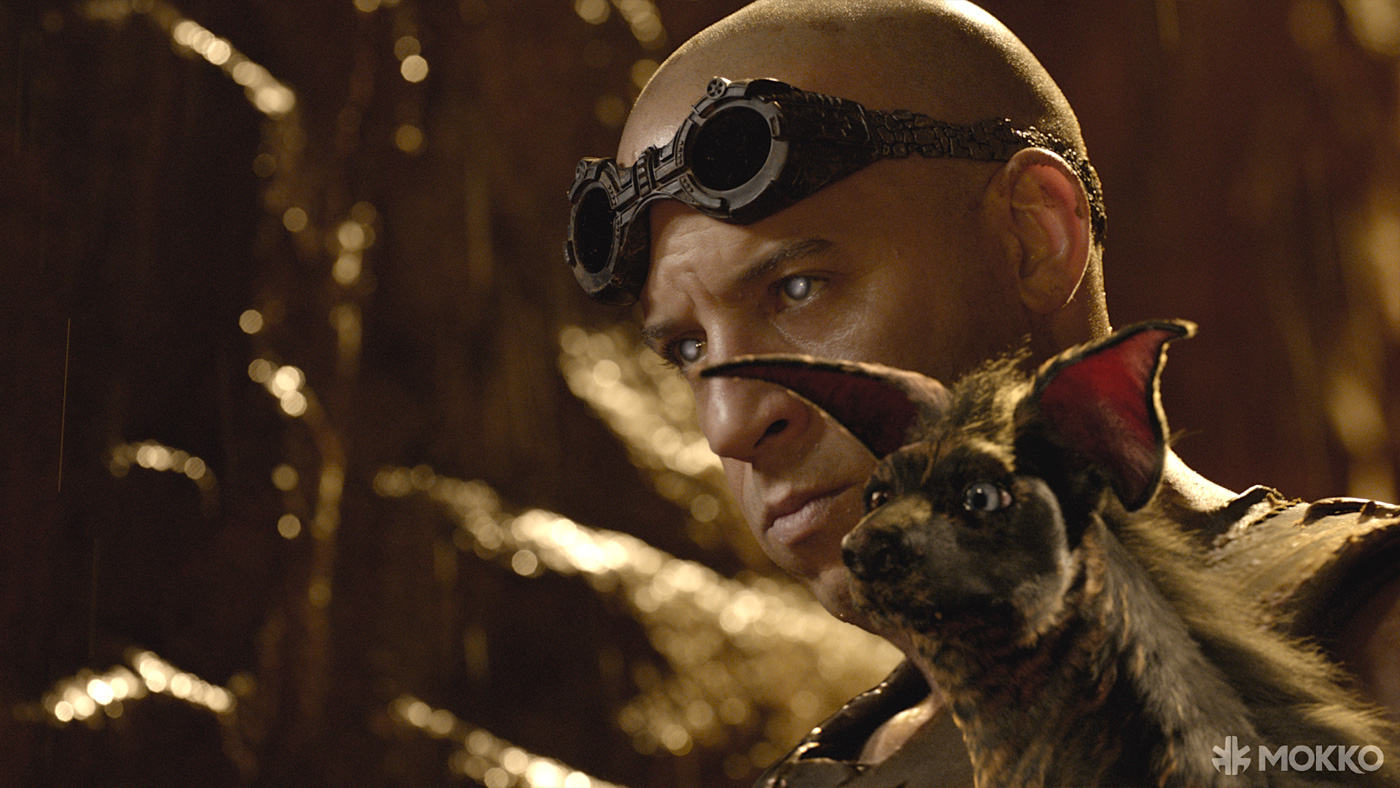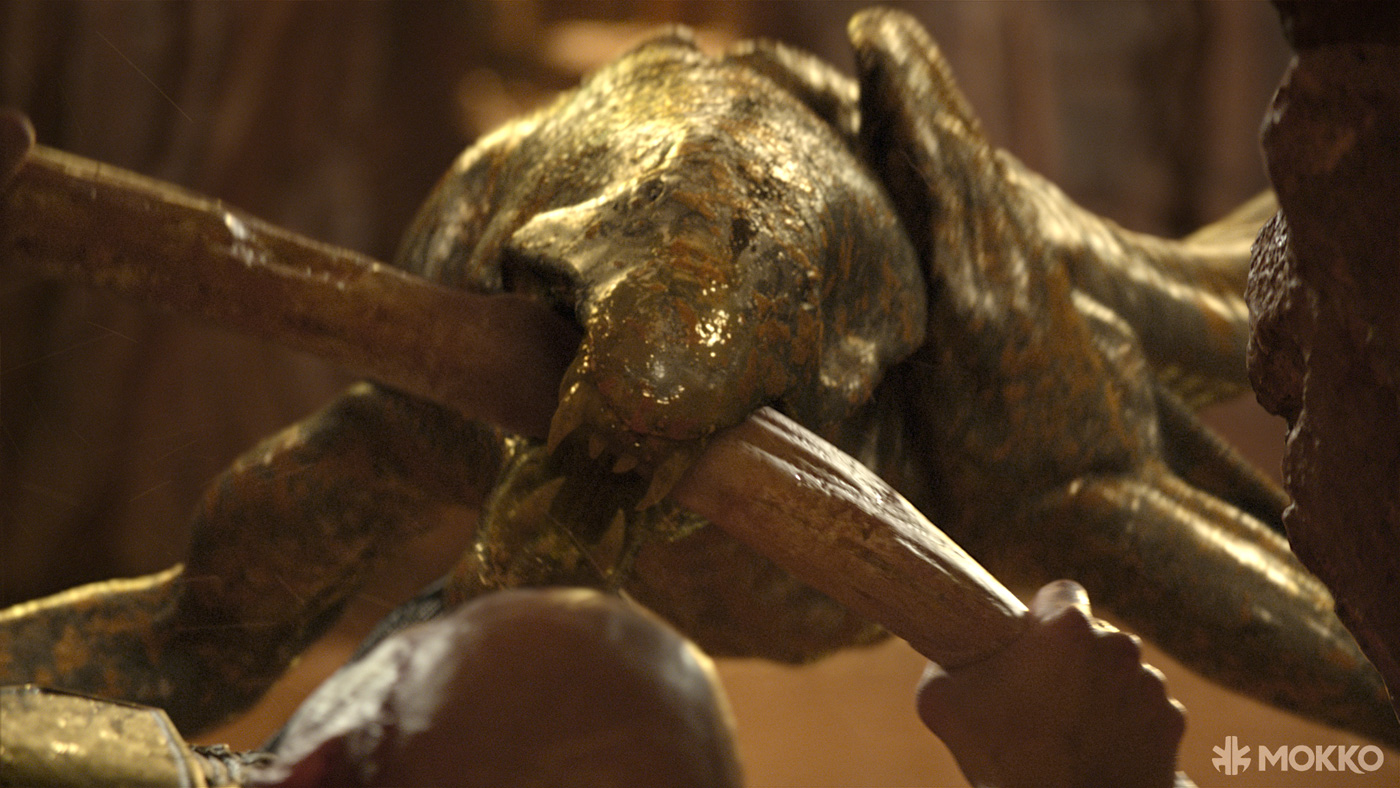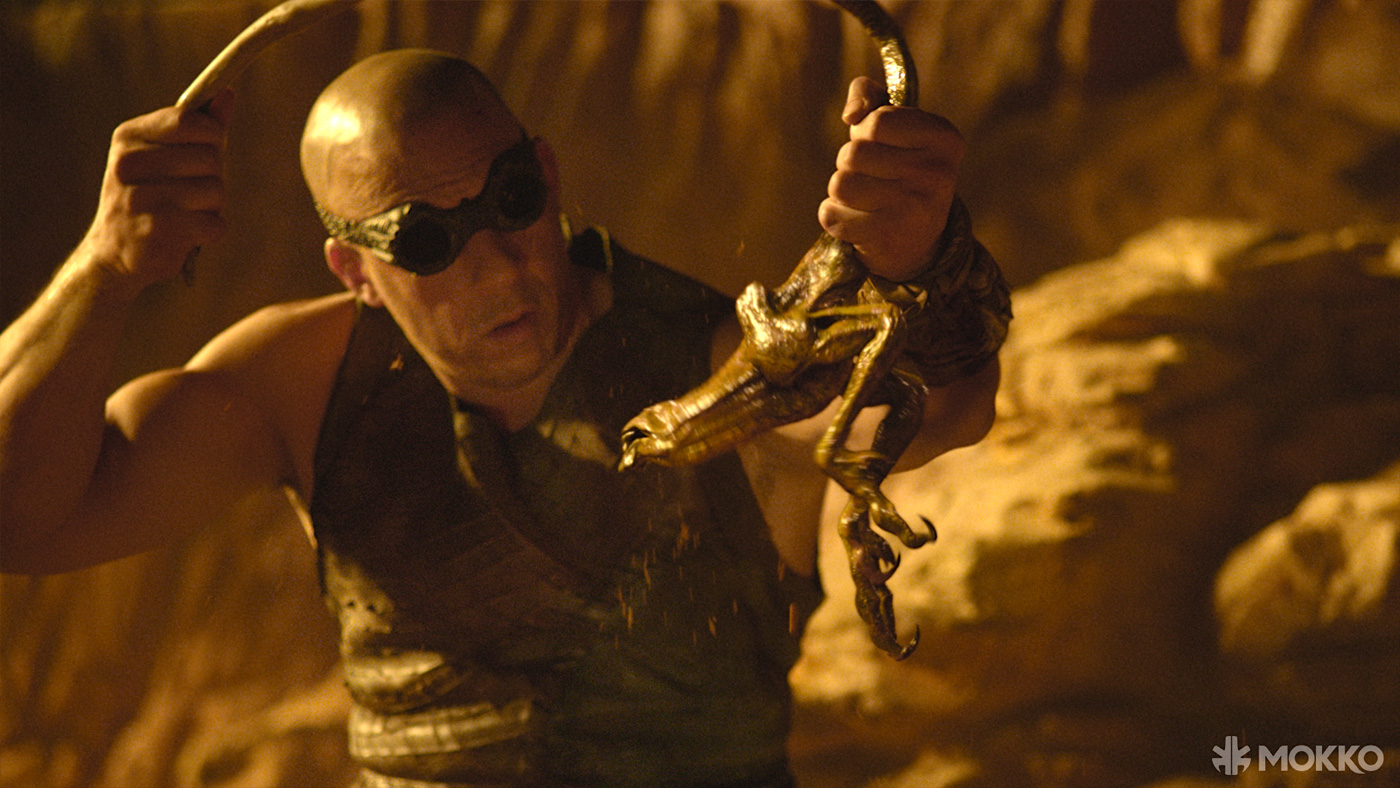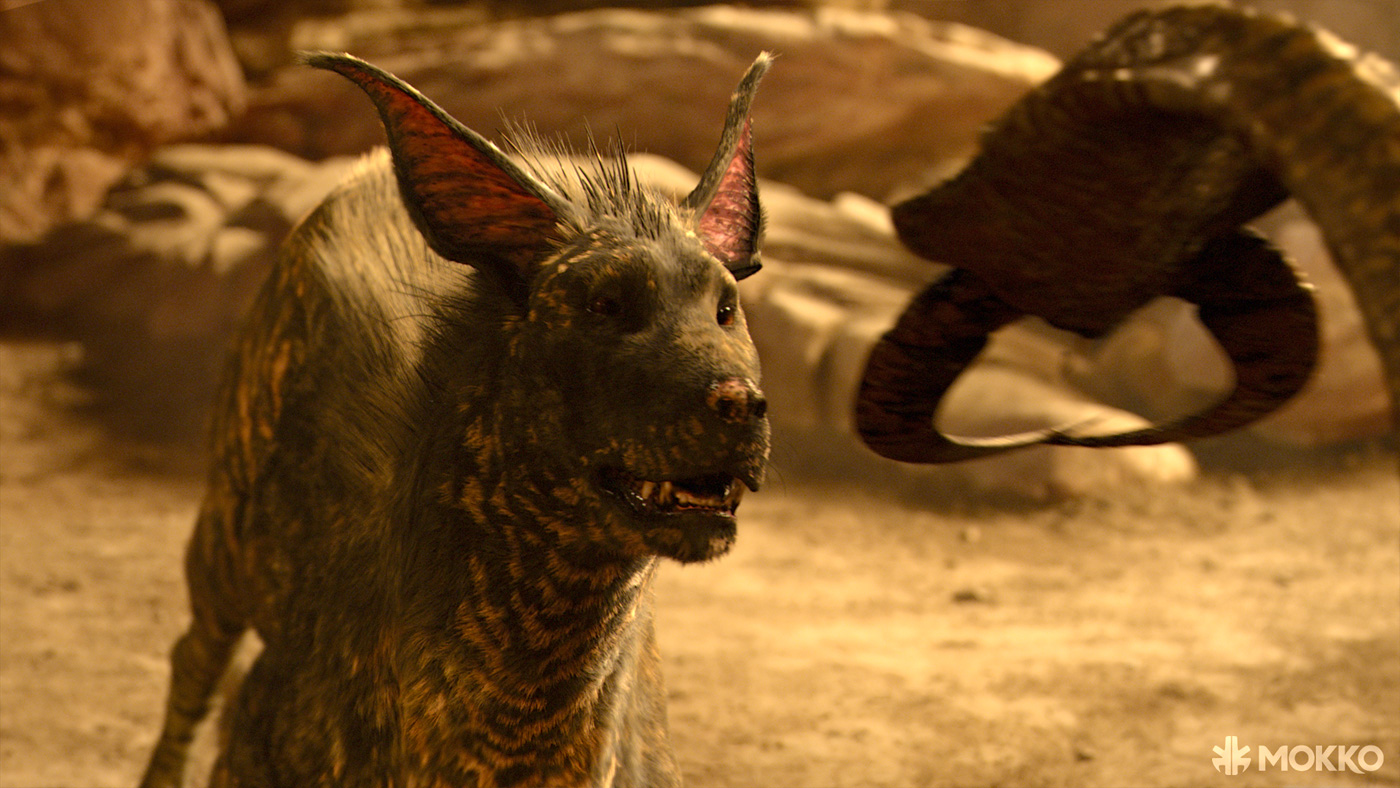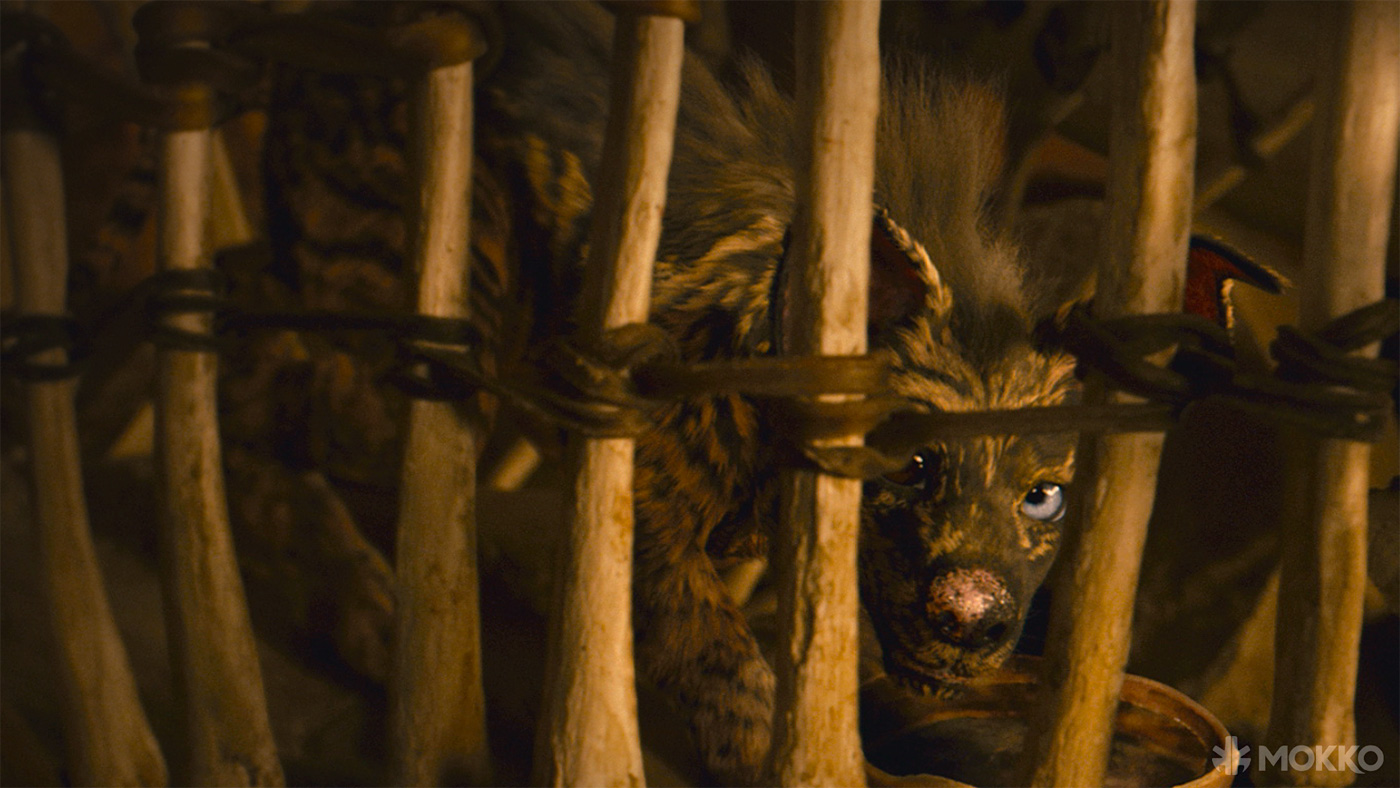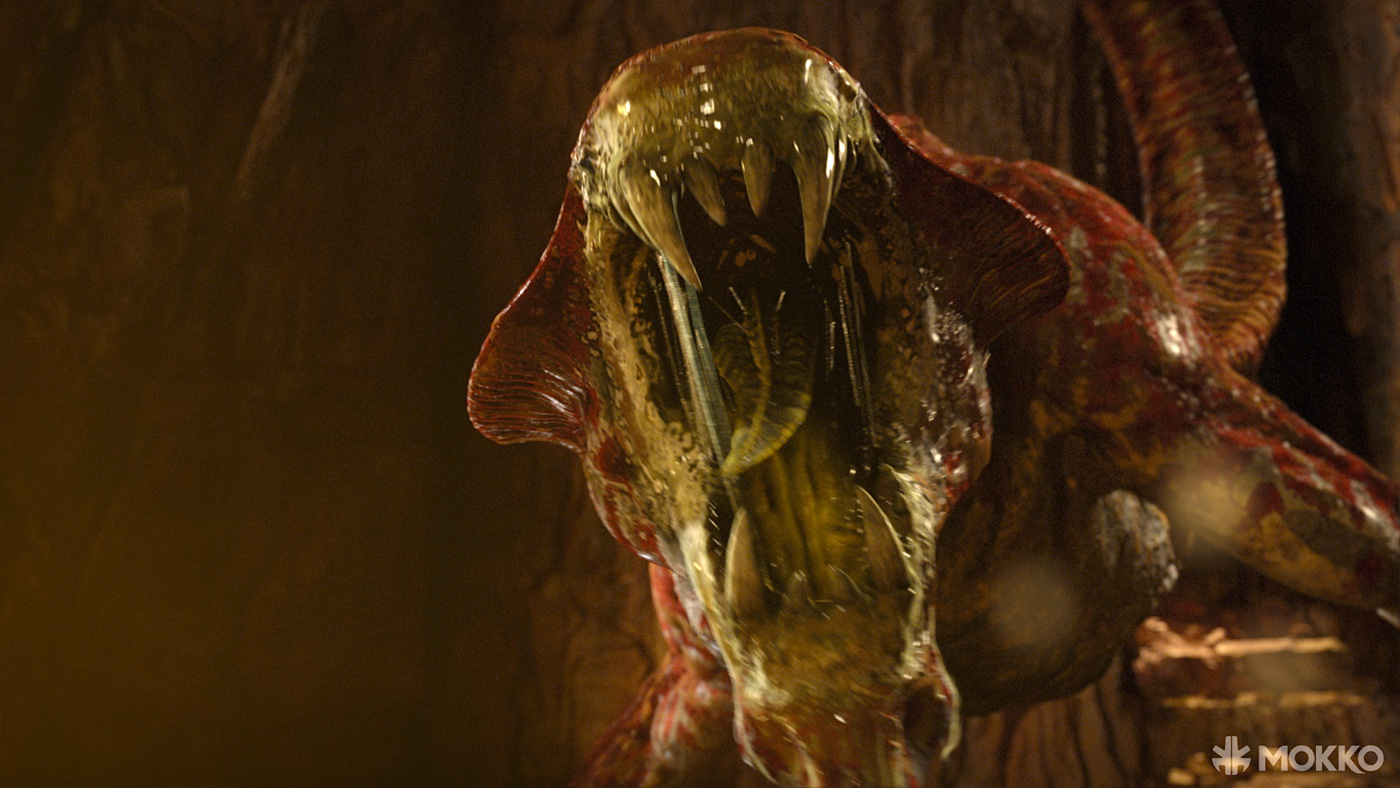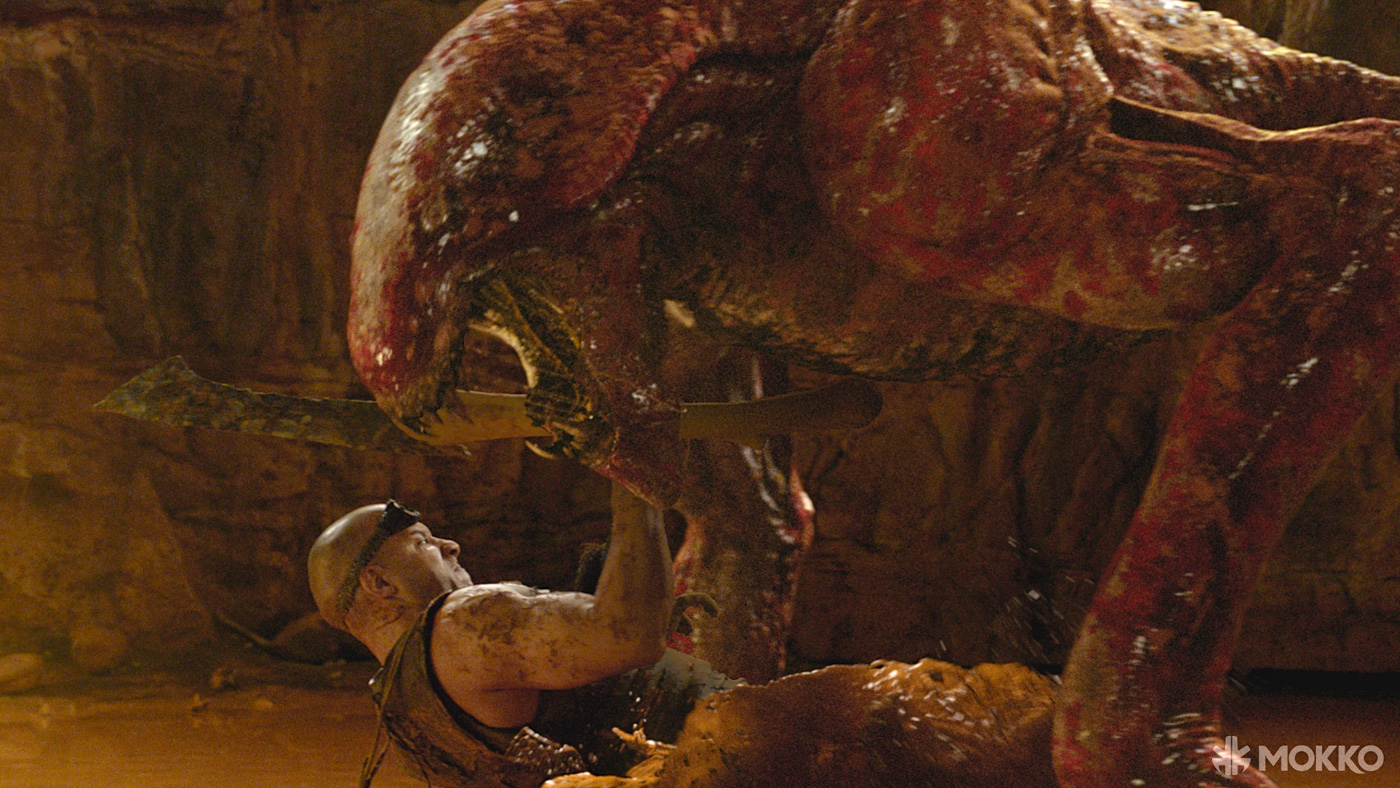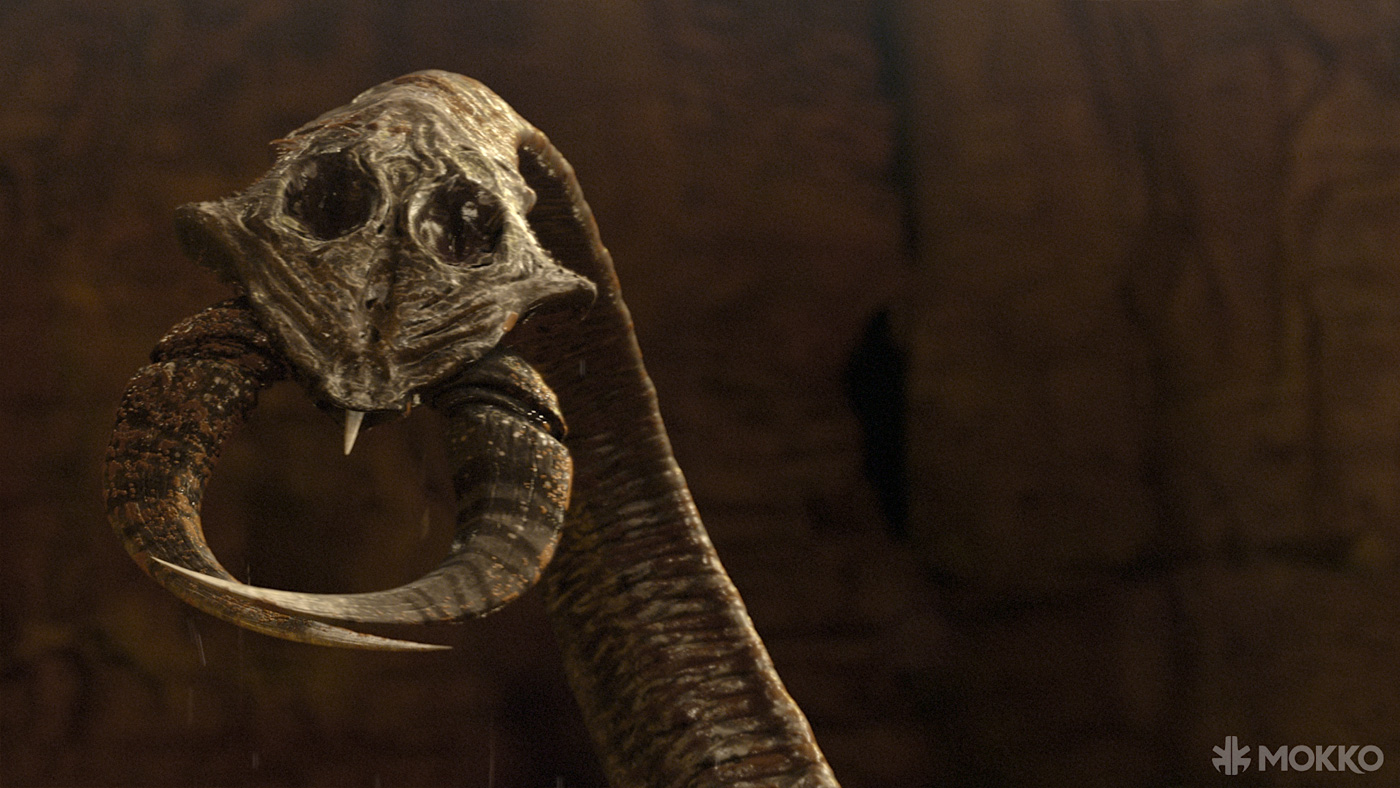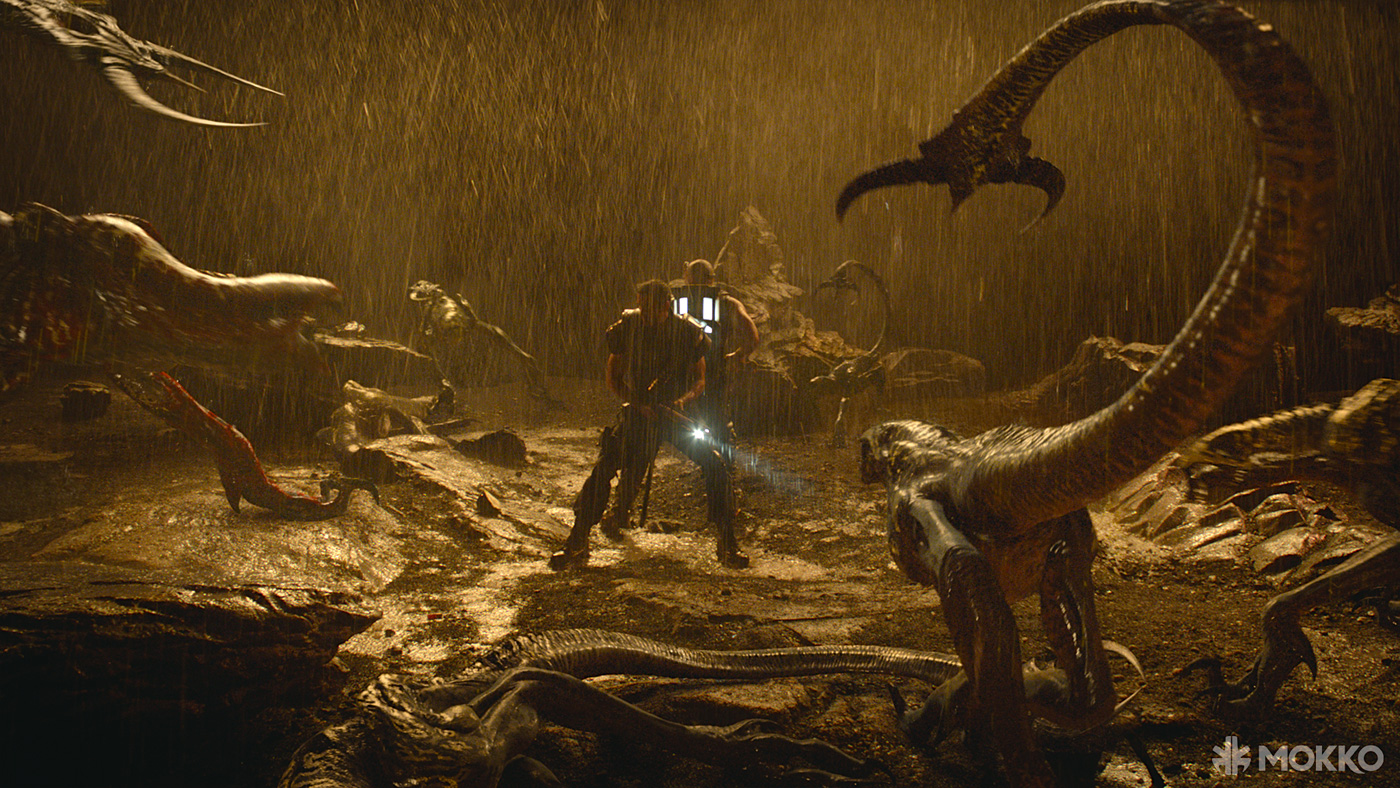Alain Lachance has over 20 years of experience in visual effects. He began as an artist Flame at Mokko Studio and worked on films like Silent Hill or THE FOUNTAIN. As VFX supervisor, he took care of the visual effects for films such as MR. MAGORIUM’S WONDER EMPORIUM, UNDERWORLD: AWAKENING or MIRROR MIRROR.
What is your background?
Started my career as an online editor many years ago before jumping at the first opportunity to work on a new software called Flame in 1994! After many years as a Flame artist working on commercials and features, I made the commitment to work in features and became partner in a new VFX company called Mokko. That was 10 years ago. Since, I have lead the compositing team, worked on-set and have been vfx supervisor.
How did Mokko Studio get involved on this show?
Mokko had evolved from a very small boutique shop to off a full pipeline including creatures. One of our first creature shows was LAST DAYS OF THE DINOSAURS for the Discovery Channel. RIDDICK’s director, David Twohy, was watching Discovery one day and came across our show. He apparently appreciated the cinematography / “texture and lighting” of it and checked the credits trying to find who worked on this show.
How was your collaboration with director David Twohy?
David was great to work with. Since we were responsible for most of the creature shots, we had great access to David because he wanted to direct the cg creatures himself. Both Arnaud Brisebois (Mokko’s Art Director) and myself were lucky enough to meet with David a few times and be in firsthand discussions with him in our bi-weekly reviews.
What was his approach about the visual effects?
It had to be real. Although the movie is set in this sci-fi world, with alien creatures, on an unknown planet… he still wanted, as we did, to make sure that the creatures, environments and integration was going to be based on reality. For example, David offered to shoot the whole movie on a stand-in dog for the Jackal to ensure we had great references for the shadows and ground integration.
How did you collaborates with VFX Supervisor Gunnar Hansen?
Actually, Gunnar is a great friend. We have had the chance to work with him a few times in the past. Right from the start of the project, we started working closely with him at figuring out how the VFX would be made.
What did Mokko Studio do on this movie?
When David came to us with the project, he already had done his own initial breakdown and showed up with basic sketches from Patrick Tatoupoulos for some of the creatures. Our creative team, lead by Arnaud Brisebois, Mokko’s VFX Art Director, completed the designs with Zbrush sketches and a great study of the physiology and texture/shading.
We ended up creating all the creatures (Jackal family, mud demon family, eels and alien vulture) from the modeling to the final rigging and textures. We also created a few digital environments and all the water simulations.
321 shots in all, none of them simple.
Can you describe your daily work on-set and during the post?
We did go on set to get the references we needed, especially for the collapsing Promontory sequence, but Gunnar and his team provided most of the information we needed. We did work closely with production when it came to the jackals. We worked with the puppet / animatronic makers and with the trainers of the real dog references we shot for our animators.
How did you approach and design the huge environments on the planet?
Our Art Director would do mash-ups to lockdown both the mood and the layout of the areas we were creating. Some environments were 2D matte paintings, others were 2,5D and some of the work was full 3D.
Riddick is confronted to a variety of creatures. How did you design these creatures?
Once we did the original designs, we needed to ensure our creatures were based on reality. Textures from a fish for the mud demons, hackals on the jackals back that are like a porcupine, an eel shape that is different than our usual eels. Quite a few discussions went into the teeth of the mud demons and its tongue, it all needed to be based on nature, yet be alien enough.
How was simulated the presence of the creatures on-set?
Production had puppets created for the mud demons, the eels and the Jackal family. In some of the extreme closeup when the camera is quite nervous you may actually get a glimpse of the puppets.
Can you tell us more about the eels-like creatures?
The live/animated eels in the water were are all created, animated and integrated at Mokko. The dead ones that Riddick is skinning were props. We worked closely with production to ensure that our designs could be recreated by the puppet team.
What is interesting about this sequence is that it was shot dry for wet. So not only did we need put in the creatures, but we also had to fake being under the murky water.
Can you explain in details about the dog-like creation?
The alien jackal was the trickier creature as it had to be alien but yet, everyone would make the reference back to any pet dog they may have. It was important to get the right references for our animators. That is why we arranged with production, to set up a shooting day with trained dogs walking, running, climbing, etc. Our team of animators also brought their own dog to study what dogs do when not trained – between takes. How does he sniff the ground? Scratch? Sneeze? What does he do when we are not normally looking?
How did you manage the animation and the rigging?
The rigging was quite complex.
We built rigs that were flexible enough to allow us to override points deformations and add extra controls to any part of the body. We also finalized all shots once the animation was approved using a proprietary sculpting tool. We used blendshapes for the face expressions. The rig of the jackal was complex with multiple detailed facial expressions and muscle movements under the fur.
What was the main challenge with the baby dog?
The director wanted cute, alien and realistic, that itself was quite the challenge. Once we locked in the design, we had to get the facial expression just right for everyone to fall in love with it as soon as they saw it. Many of the shots were designed to be close-ups (while in the cage for example) which added an extra level of complexity to the facial rigging and animation.
Can you tell us more about the render aspect?
We had a short ramp up time between the award of the show and the production, we had tested all rendering softwares and went with the solution that was the quickest, most fail safe to put in place for great fur renders. We chose Pixar’s Renderman. Our TD’s worked real hard to put this new pipeline in place in the little time we had.
How did you manage the animation challenge with the mud demons?
The mud demon’s animations were to be based on certain aspects of real creatures and physics we know, but since we did not have any good references (nothing is quite like a mud demon) for them we did some walk/jump/crawl cycles to discuss with the director. We finally came up with what you have seen in the movie.
Can you tell us in details about the mud creation and other FX elements?
Riddick was definitely the most FX heavy show we had ever done, between the incredible smoke columns of the promontory sequence, the collapsing of the promontory and the very challenging water/mud sims.
For example, we starting doing research on the mud sims before production started shooting the movie. We had to have complete control on every single aspect of the water, ie : viscosity, speed, texture, color, specs, etc… Our set up worked really well and gave us the flexibility we needed to match the onset water/mud production would come up with. Once on set, they determined what would work for them and we ended up matching it. We used Naiad for the water simulations of the mud pools.
Multiple challenges arose as we were working on these shots: Not only does the simulation need to look realistic (speed and size) but the lighting and compositing need to be flawless for anyone to believe the creatures are there with Riddick. So, using the plates of Riddick in a pool of water, we merged our cg water simulations seamlessly to the live water. At some point, even our team could not tell where the transition between the real and cg water was!
Did you collaborates with the other VFX studios?
Yes, we shared assets. Since we had built all the creatures we provided other studios with models and textures for the few shots we did not animate.
What was the biggest challenge on this project and how did you achieve it?
There was a few challenges on this project, that were such a great opportunity for Mokko to shine and show what our team had been working towards for the last 9 years. People say the most difficult vfx are the ones that have water simulations or that have fur. This movie had both… and lots of them!
How did you live up to the challenge?
Talented, dedicated people. From the TD’s who were putting in place a new pipeline during production, the IT department installing new hardware, to all the artists with their incredible talent and experience.
Was there a shot or a sequence that prevented you from sleep?
Most of them.
What do you keep from this experience?
That we have a solid core team of artists and that we can grow our team with talented people from everywhere in the world. Mokko had a team of 40 when we started RIDDICK and finished with 130 (including our team working on WHITE HOUSE DOWN).
How long have you worked on this film?
9 months, but started discussing it with the director a year before the show was green lit.
What is your next project?
Working on 2 features right now and a major tv show.
What are the four movies that gave you the passion for cinema?
ALIEN
STAR WARS
BLADE RUNNER
2001: A SPACE ODYSSEY
A big thanks for your time.
// WANT TO KNOW MORE?
– Mokko Studio: Dedicated page about RIDDICK on Mokko Studio website.
RIDDICK – MOKKO STUDIO – MAKING OF
© Vincent Frei – The Art of VFX – 2013


